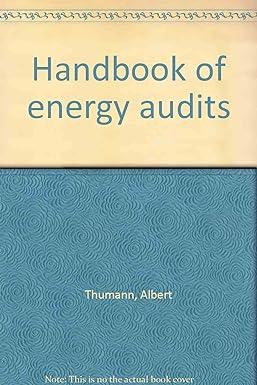Question
Lewis Securities Inc. has decided to acquire a new market data and quotation system for its Richmond home office. The system receives current market prices
Lewis Securities Inc. has decided to acquire a new market data and quotation system for its Richmond home office. The system receives current market prices and other information from several online data services and then either displays the information on a screen or stores it for later retrieval by the firms brokers. The system also permits customers to call up current quotes on terminals in the lobby. The equipment costs $1,000,000 and, if it were purchased, Lewis could obtain a term loan for the full purchase price at a 10% interest rate. Although the equipment has a 6-year useful life, it is classified as a special-purpose computer and therefore falls into the MACRS 3-year class. If the system were purchased, a 4-year maintenance contract could be obtained at a cost of $20,000 per year, payable at the beginning of each year. The equipment would be sold after 4 years, and the best estimate of its residual value is $200,000. However, because real-time display system technol- ogy is changing rapidly, the actual residual value is uncertain. As an alternative to the borrow-and-buy plan, the equipment manufacturer informed Lewis that Con- solidated Leasing would be willing to write a 4-year guideline lease on the equipment, including mainte- nance, for payments of $260,000 at the beginning of each year. Lewis marginal federal-plus-state tax rate is 40%. You have been asked to analyze the lease- versus-purchase decision and, in the process, to answer the following questions: a. (1) Who are the two parties to a lease transaction? (2) What are the five primary types of leases, and what are their characteristics? (3) How are leases classified for tax purposes? (4) What effect does leasing have on a firms balance sheet? (5) What effect does leasing have on a firms capital structure? b. (1) What is the present value cost of owning the equipment? (Hint: Set up a time line that shows the net cash flows over the period t 5 0 to t 5 4, and then find the PV of these net cash flows, or the PV cost of owning.) (2) Explain the rationale for the discount rate you used to find the PV. c. What is Lewis present value cost of leasing the equipment? (Hint: Again, construct a time line.) d. What is the net advantage to leasing (NAL)? Does your analysis indicate that Lewis should buy or lease the equipment? Explain. e. Now assume that the equipments residual value could be as low as $0 or as high as $400,000 but $200,000 is the expected value. Because the residual value is riskier than the other relevant cash flows, this differential risk should be incor- porated into the analysis. Describe how this could be accomplished. (No calculations are necessary, but explain how you would modify the analysis if calculations were required.) What effect would the residual values increased uncertainty have on Lewis lease-versus-purchase decision? f. The lessee compares the cost of owning the equipment with the cost of leasing it. Now put yourself in the lessors shoes. In a few sentences, how should you analyze the decision to write or not to write the lease? g. (1) Assume that the lease payments were actually $280,000 per year, that Consolidated Leasing is also in the 40% tax bracket, and that it also forecasts a $200,000 residual value. Also, to furnish the maintenance support, Consoli- dated would have to purchase a maintenance contract from the manufacturer at the same $20,000 annual cost, again paid in advance. Consolidated Leasing can obtain an expected 10% pre-tax return on investments of similar risk. What would be Consolidateds NPV and IRR of leasing under these conditions? (2) What do you think the lessors NPV would be if the lease payment were set at $260,000 per year? (Hint: The lessors cash flows would be a mirror image of the lessees cash flows.) h. Lewis management has been considering moving to a new downtown location, and they are con- cerned that these plans may come to fruition prior to the equipment leases expiration. If the move occurs, then Lewis would buy or lease an entirely new set of equipment, so management would like to include a cancellation clause in the lease contract. What effect would such a clause have on the riskiness of the lease from Lewis standpoint? From the lessors standpoint? If you were the les- sor, would you insist on changing any of the other lease terms if a cancellation clause were added? Should the cancellation clause contain provi- sions similar to call premiums or any restrictive covenants and/or penalties of the type contained in bond indentures? Explain your answer.
Step by Step Solution
There are 3 Steps involved in it
Step: 1

Get Instant Access to Expert-Tailored Solutions
See step-by-step solutions with expert insights and AI powered tools for academic success
Step: 2

Step: 3

Ace Your Homework with AI
Get the answers you need in no time with our AI-driven, step-by-step assistance
Get Started


